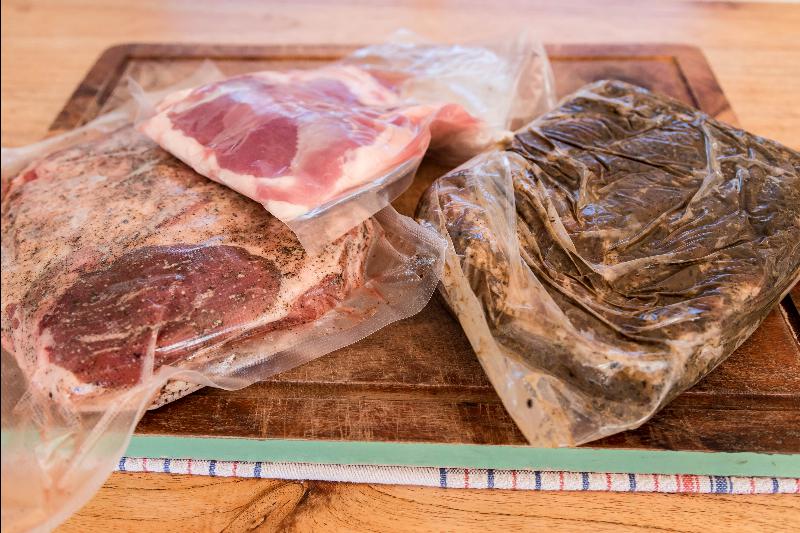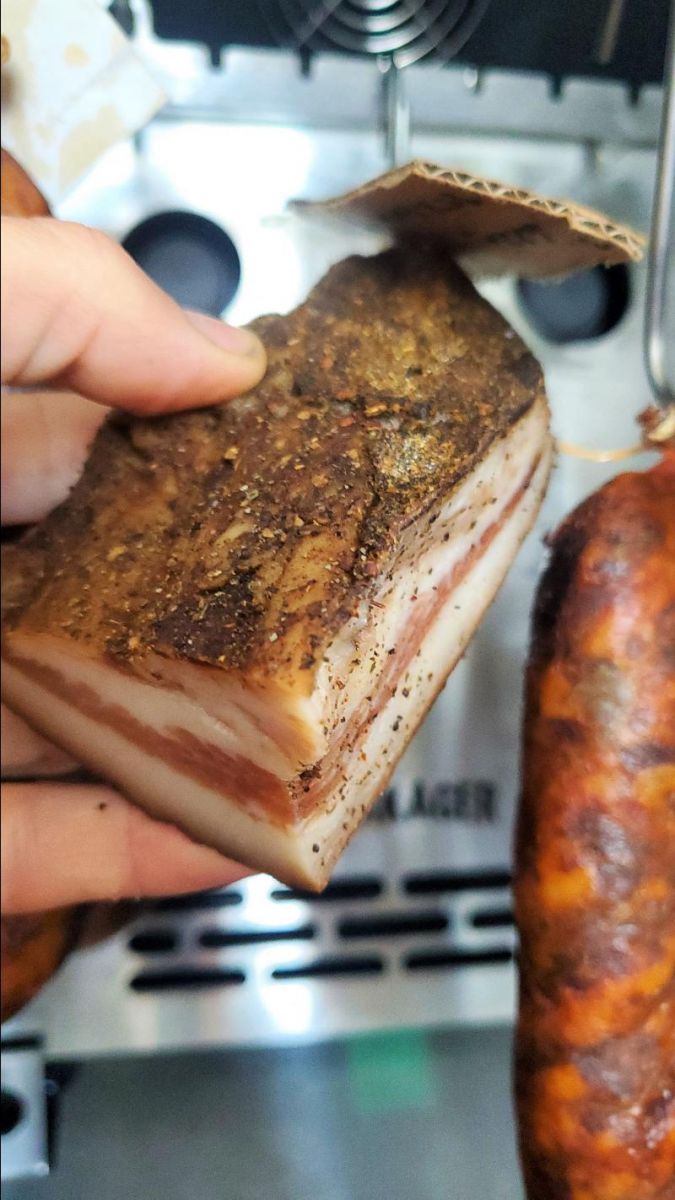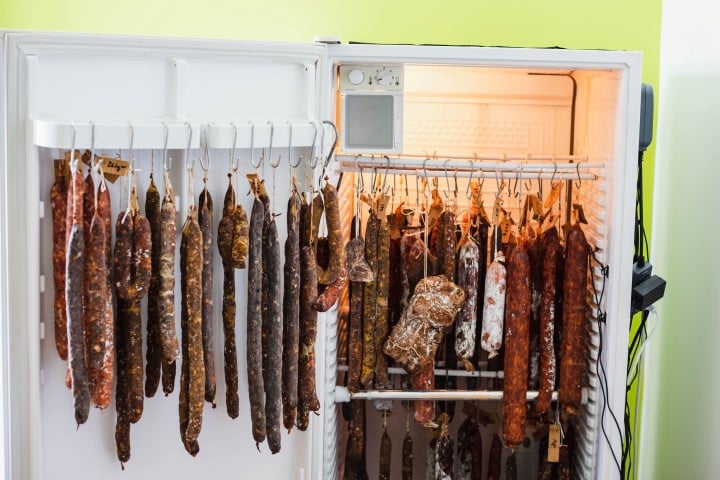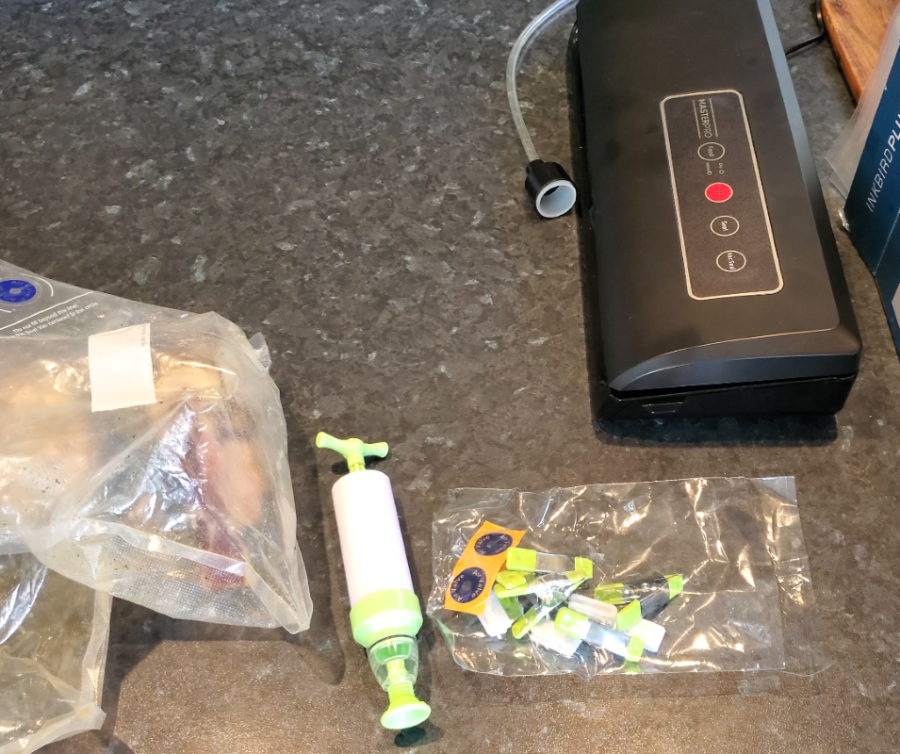The way you store cured meats does depend a lot on what style of cured meats you have.
I’ve got a true passion for cured meats of all kinds, and that’s why I started this website. I buy and make my own types of cured meats of every style you can imagine across the globe.
I thought it would be useful to explain the different categories and what I’ve learned about the best ways to store the various kinds of cured meat.
Freezing in a bag without oxygen is the easiest and most straightforward way to store cured meat. However, various techniques can be used because of the variety of cured meat. Vacuum packing meat can also extend the life of dry whole cured meat products without degenerating quickly.
As you will see, oxygen and surface area are big factors.
How to Store Cured Meats
Most people think salami is the only type of cured meat but I’m going to show four different categories and what tips and tricks I use, which has helped develop the flavor of my own creations for many years.
First, a summary, then on to the details.
I’ll show you some techniques for getting the air out of the bag if you don’t have a vacuum packing machine.
One of the issues I have with vacuum packing machines is the single-use plastic that they have, something I try to avoid.
I loved using some reusable vacuum-packed bags for quite a few years – they don’t provide a perfect solution but it’s better than something you can just only use once.
The whole purpose of making dry-cured meats like pancetta or whole sticks of the picante dry-cured salami. It was to keep it longer to preserve until at least the next winter.

Oxygen and Contact Surface of Meat is the Key
You’ll see the same kind of things running through this article, for sliced cured meats its has lots more exposed surface area it will deteriorate fast.
Compared to a whole chunk of cured meat, which potentially has the chance of lasting a very long time and just slightly drying out more.
The first two categories of whole whole-muscle dry-cured meat and dry-cured salami are salt-cured and dried products for preservation.
They are not cooked during the process.
However, I have seen across the Western world a budget-friendly type of salami that only takes a few days to make – rather than several months.
The way they produce this is by adding a lot of preservatives and lowering the pH rapidly which increases the acidity to get rid of unwanted bacteria that spoils salami. It protects it using an acidic environment.
Here are the cured meats I will go into detail about:
- Whole Muscle Dry Cured Meat – Sliced and Unsliced
- Dry Cured Salami – Sliced and Unsliced
- Smoked Ham
- Pastrami and Other Cooked/Hot Smoked

Best Ways of Storing Whole Muscle Dry-Cured Meat
For a product that is preserved, I’ll give examples and then different ways to store it. I will do this for each of the different categories above.
Examples of Dry Cured Whole Muscle
Pancetta, braesola, prosciutto, guanciale, lonza, coppa, culatello, spalla, speck
Storing Whole Pieces of Dry Cured Meats

If you have a whole chunk of finished dry-cured meats like the ones above.
You see these hanging in Italy and Spain in shops, cafés and restaurants.
Just be aware that light and sunshine should be avoided on whole muscle dry cured meats because the fat can turn yellow and become rancid if you hang it in the kitchen or pantry.
Which of course, will mean it’s edible but doesn’t taste very nice!
Unless it is summer and the temperature is at a point where the fat starts to render these are considered preserved for months without refrigeration in a moderately cool temperature – not fridge unless air is removed.
It would be better to keep these products without any plastic and in a temperate, mild place – say under 60 or 70°F.
Against popular reason, do not put them in a fridge – because it will dry out quickly and then become not so pleasant to eat.
If you have a vacuum packer, you can remove the air out of it, seal it and then put it in a fridge for long-term storage.
I have vacuum-packed finished whole muscle dry-cured meats that are been in the fridge for three years and are still perfectly fine.
There is another trick if you have a pot of water and a ziploc bag, you can put your cured meat in the bag close up most of the ziploc and slowly put the bag in the water.
Once the water is near the top of the ziploc, you finish zipping it up which will have pushed most of that year out of the bag.
You have to be very careful with this since it’s a skill in itself!
Lastly, I had a friend who came on a hunting trip with a large whole prosciutto. He didn’t know it was preserved, so he ended up freezing it.
A note on whole prosciutto: the skin around the leg, if it’s a WHOLE prosciutto, also protects the cured meat (here is an article about what cured meats should be in the fridge) from drying out.
And to be honest, when it was thawed out, it still was completely fine.
Storing Cut or Sliced Dry Cured Whole Muscle
Once slices have been done, it’s tricky. As mentioned above, since it has had a lot more exposure and oxygen, it will deteriorate quicker.
If you keep sliced cured meat in an airtight container in the fridge, it will probably last for about a week.
Freezing could be another option. I think the reason why it freezes okay is because when the meat is fresh and has about 70% water, good quality dry cured meats have lost 30 to 50% of their water content so you only have about 20% water left in the meat.
Best Ways of Storing Dry-Cured Salami

For a whole chunk of dry-cured salami (I wrote about salami and keto in detail here) the storage is very similar to the above-mentioned tips on storage. You have a very similar product, although you will find salami does go bad quicker since the meat has been ground; therefore, it’s exposed to more of the environment before it’s stuffed.
Examples of Dry Cured Salami
Felino, Milano, Sopressata, Cacciatore
Storing Whole Dry Cured Salami
Like the above, keeping this at a moderate or mild temperature is better than being in a fridge and drying any further.
Storing Cuts or Sliced Salami
They often come in a plastic vacuum-packed package. Once you open it you probably have 4-8 days until it is not worth keeping it anymore.
It’s the same if you keep it in the fridge. It will not last long sliced at room temperature, half a day as long as it’s not too hot – then again the fat will start rendering even at moderate temperatures.
Best Ways of Storing Smoked Ham
Smoked ham has often been cured using a wet brine, which holds moisture in the meat for curing, smoking, and the cooking phase. The ham is often smoked at a lower temperature.
Cheap smoked ham often is ‘maxed’ out with water, supermarkets sometimes add preservatives to help the pork retain water. If you read the ingredients, sometimes a smoked ham will say 70% pork!
This also occurs for emulsified products like hot dogs and boloney, where methods are used to hold water inside instead of meat so they can make more profit.
Examples of Smoked Ham
Hind Leg Smoked Ham, Boneless Smoked Ham
Storing Whole Smoked Ham
Due to the salt and the smoke, you’ll get up to three weeks when the whole piece is kept in the refrigerator for a wet, brined, and smoked ham, not sliced ham.
There are many different versions and styles of smoked ham, some have more saturation of salt some less. Deli Ham versus homemade brined and smoked Ham are completely different, deli ham is sometimes pressed with different bits of mushed together and emulsified.
On the safe side I would say less than one week would be advisable for most styles of smoked ham, which are cooked – not dried like dry cured meats in the first two categories.
Storing Sliced Ham
What I like to do with sliced ham is place it on a baking tray lined with baking paper. Then I have a large enough freezer to put the tray and freeze it per slice.
Once it is frozen, I take it off the tray, place it in a Ziploc bag, and then put it back in the freezer.
I have found what this does, and it’s a big tip: This prevents the pieces of sliced ham from sticking together when you want to take it out to defrost and eat it.
I do this with hot and cold smoked bacon, too like this:

Best Ways of Storing Pastrami and Cooked/Hot Smoked
While following a similar process to the above – pastrami is often water-brined or some like to say pickled – it is then either hot smoked, steamed, or baked.
Sometimes, you have a style of ham, often not made from pork due to the Jewish ideas. I’ve made pastrami with chunks of lean wild meat like Himalayan Tahr and Wild Venison.
Examples of Pastrami
Beef Pastrami, Smoked Pastrami
Storing Whole Pastrami
Similar to smoked ham because it’s a similar type of product.
These cooked smoked cured meats, you can also vacuum pack them which would give you another couple of weeks if kept in the fridge.
Storing Sliced Ham
Again I would use the same technique as smoked ham, and freeze in slices on a tray with baking paper so it doesn’t stick.
If you are keeping sliced pastrami in the fridge they are going to have up to a week.
Please note, including any of the above recommendations, when buying read the best before date or use by date, as well.

It’s actually a sous vide kit, too!

Main Products I Use to Store Cured Meats (Amazon Links):
Vacuum Sealer – Pick one of these with a nozzle for the round valve like this.
You can get the manual pump as shown, but it is easier to get one of those flat hose air removers for the reusable bags
Reusable Bags for Vaccum Sealer
Here is a kit with the Bags also, including a sucking air machine.

Tom Mueller
For decades, immersed in studying, working, learning, and teaching the craft of meat curing, sharing the passion and showcasing the world of charcuterie and smoked meat. Read More
